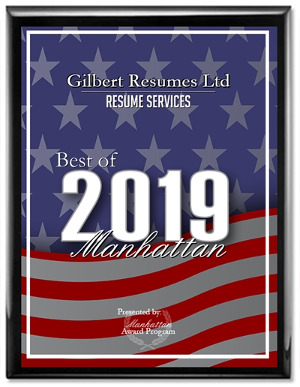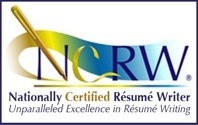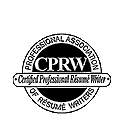Search Strategy – The Landscape Has Changed For Job Seekers
{Click here to read the original article on LinkedIn.}
The process of job search has changed from the old days of searching the job listings in the classified section of the newspaper. Technology and the internet have changed every aspect of our lives of course, but other factors have impacted the way employers hire people. Job seekers must execute a diversified strategy and employ a variety of activities to leverage as many career options as possible.
Employers have become more sophisticated in ways that impact job seekers significantly. Job applications must be analyzed and dissected prior to resume customization. Many employers prefer to bring in professional and technology staff as contractors before hiring them ‘permanently’. The recruiting industry provides targeted outsourcing, consulting services and permanent placement opportunities in ‘niche’ markets that were unknown 15 years ago.
In ascending order of importance, the following activities constitute a diversified, comprehensive job search plan:
1) Applications – HR Applicant Tracking Systems (ATS) are the initial screening mechanism for most of today’s employers. ATS systems use keyword scanning technology to eliminate most applicants prior to the first telephone interview by assigning a score to each resume. Scores are based on a prepared list of as many as 100 or more key words that are included in the content of the job posting. This includes identifying repeated words. If a job posting repeats certain words, your resume should repeat that word the same number of times. (Note: Acronyms or abbreviations don’t count. So far, ATS systems don’t do synonyms.)
Many job seekers don’t understand this critical concept: if you don’t get a high enough score, your resume is deleted. Every resume you submit should be a customized version based on your detailed analysis of the key words and repeated words that you identify and integrate into your resume. In effect, it doesn’t make much sense to apply unless your resume is customized.
2) Working with Recruiters – The recruiting industry has expanded significantly in the past 10 years. More companies employ outside recruiters, and more companies bring on contractors first, rather than hiring outright. Local temp agencies place professionals with major employers every day, in contract positions as well as permanent placements.
Referrals to local recruiters from your established contacts are a great place to start. As part of your comprehensive search, I recommend contacting every recruiting agency in your area to evaluate their services. Note: Some temp agencies provide benefits, including 401Ks and accrued vacation time. Another benefit to working with recruiters: keyword analysis and custom resumes aren’t necessary.
As for contract opportunities, in many cases there is no interview at all. The temp or contracting agency just calls you and tells you where to go – solely based on the resume they submitted for you. In effect, temping and consulting are great job search strategies that allow job seekers to get a foot in the door with a possible employer, show current employment, and earn a pay check while you search.
(Note: Contract and temp hiring is more often limited to administrative, project, professional and technical staffing. Although management and sales positions tend to be permanent, consulting can be an excellent approach for executive-level talent to get a foot in the door with a prospective employer.)
3) Online Presence – The advent of the internet brought about dramatic changes in the process of job search, most importantly because employers and recruiters acquired the ability to search for candidates to fill positions – rather than wait for applicants to respond to ads. From its beginning, LinkedIn.com was attractive to recruiters because it gave them the ability to search for and contact qualified candidates, and see recommendations from their former and current colleagues.
Job seekers must understand the principals of search engine optimization (SEO) in order to show up at the top of recruiters’ search results – although many do not. While LinkedIn incorporates SEO principals into every profile (see ‘Skills and Endorsements’), other sites may yield better SEO results through the use of ASCII text resumes with integrated keyword summaries.
4) Networking – Part of the genius of LinkedIn is its foundation in the basic principles of networking. Connect with people that you know, who work for the same company, or share your interests in affinity groups. Help your connections through endorsements and recommendations; or by introducing them to one of your connections.
Who you know has always been the best source of employment for precisely that reason. People who know and care about you are motivated to help you. Their referrals and introductions can and should be every job seeker’s most important resource.
But LinkedIn and the internet don’t take the place of face-to-face meetings. Get out of the house and meet your most respected and connected friends and colleagues. In “informational interviews”, ask them strategic questions that you develop to further your search. Get their opinions and suggestions, and most importantly: ask them for referrals. “Who do you suggest that I talk to learn more”? “Who do you know that owns their own business”?; or “Who do know that works in my target company or industry”?; “Do you think they would talk to me”?; and “Would you be willing to introduce me”?
This is (and has always been) hands down the most effective way to find work. People prefer not to hire a stranger if they can help it. People prefer to hire someone they know, or someone who comes recommended by someone they know.
Planning and Tracking
Lastly, 2 other key practices will have a big impact on the speed and effectiveness of your search:
a) Have a written plan. It doesn’t have to be long. Even a single page is enough, but it is important to have a blueprint to refer to as you settle in for a comprehensive, systematic search.
b) Implement an activity tracking system. Once you get going meeting with recruiters, networking with contacts, applying for jobs and managing your online presence, you will create activity. Your calendar will be full and you will need to follow up. If you’re doing your search correctly, you won’t be able to manage it all without a tracking system. Excel spreadsheets are good, and Jibberjobber.com is a cloud-based system I recommend to all of my clients. I encourage you to find some kind of tracking system that will work for you.
Finding a new job is a complex task in our highly connected, technological world. The opportunities and organizations available today are varied and exciting. There are great employers out there that need good people as their companies grow. An integrated, balanced approach to job search provides for a wide variety of options to choose from, so that job seekers can make healthy, informed choices.
Comments are closed.







